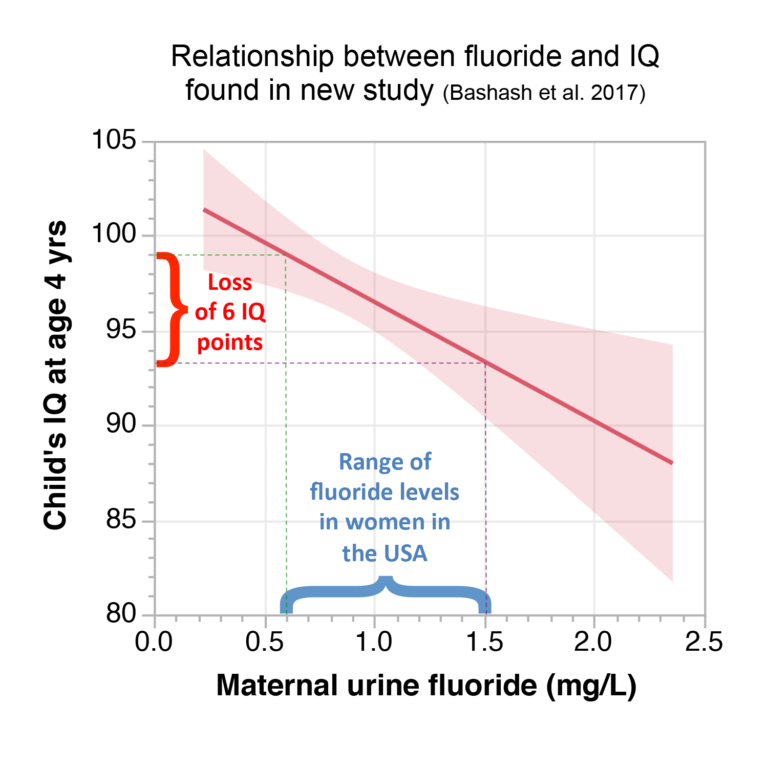
What’s the big deal about Fluoride: Part II
The second part of our discussion about fluoride focuses on the findings in recent scientific studies. To review, fluoride is commonly added to water as a public health service through process called fluoridation. In fact, fluoride is added to approximately 70% of public drinking water systems across the U.S. as dental treatment. In Maryland, the percentage is higher with 96% of the population receiving fluoridated water from public water supplies.(1) Although valid data for water fluoridation exists, the case for removing fluoride in public water is emerging. Read more about fluoride effects on your health.
Negative Effects of Fluoridation
Topical use of the right amount of fluoride can improve the health of teeth and gums. However, over time, fluoride in excessive amounts can cause problems. Issues such as discoloration of teeth and fluorosis may occur.
In fact, fluoridation is causing millions of children to develop dental fluorosis. Scientists from the Centers for Disease Control have even acknowledged that fluoridation is causing “cosmetically objectionable” fluorosis on children’s front teeth. Long-term exposure can lead to skeletal fluorosis. Skeletal fluorosis is a disease that causes stiffness and pain in the joints and, in some cases, can even change bone structure and calcify ligaments.
Lastly, a growing body of evidence indicates that fluoridated water, in addition to other sources of daily fluoride exposure, can cause or contribute to a range of serious effects, including arthritis, damage to the developing brain, reduced thyroid function, and possibly osteosarcoma (bone cancer) in adolescent males.
Fluoride & Your IQ
More specific information about the negative effects of fluoride in water was published in a medical study completed in 2017. CNN recently reported on the study that linked fluoride exposure in utero to lower IQ in children. The study, completed in Mexico by the journal Environmental Health Perspectives, discovered the occurrence of lower IQ rates. The study found differences only in the brain development in utero and no changes once a child was born. “Childhood exposure to fluoride is safer than prenatal. There is pretty good science now to support the fact that the fetal system tends to be more sensitive to environmental toxicants than once the child is born,” said the study’s lead author, Howard Hu, founding dean of the Dalla Lana School of Public Health at the University of Toronto.
The study is the first of its kind. Researchers will need to replicate the results in other countries and demographics to further validate the findings. It’s important to note, the range of fluoride levels in Mexico also corresponded closely to the range found in most of the USA.
How Much Fluoride Is In My Water?
The national guidelines for fluoride set limits at 0.44 PPM (parts per million) which probably sounds like a small amount. Consider the fluoride amounts in toothpaste versus water and the number becomes more significant.
Did you ever wonder if there is more fluoride in the toothpaste on your toothbrush or in the water your drink? Studies have compared the fluoride levels in the FDA recommended “pea-sized” amount of toothpaste and a liter of water. One dentist conducted a rudimentary study and determined the toothpaste has 0.3mg of fluoride versus 1mg in the liter of water. The concentration of fluoride found in water is more than three times the amount in the toothpaste!
Alternatives
If you are concerned about fluoride in your water, the first step is to test the water. A certified water testing company is a reliable source with the tools to provide an accurate reading of the fluoride in your home’s water. After that, you can install a water filtration system to remove fluoride and other potentially harmful chemicals, like arsenic and chlorine. The water filtration system should treat your drinking water, at a minimum.
The best option, however, is a whole house filtration system. A Hague WaterMAX filtration system with H6500 Reverse Osmosis, for example, will remove contaminants at the point of entry to your home and provide superior drinking water. This ensures all of the water in your home is the best quality!
If you are unsure about the amount of fluoride in your home’s water, contact a water treatment expert to learn more today!
Sources:
1. https://www.cdc.gov/fluoridation/statistics/2014stats.htm
2. https://www.cdc.gov/mmwr/preview/mmwrhtml/mm4841a1.htm
3. https://fluoridealert.org/issues/water/
4. https://www.livestrong.com/article/133760-side-effects-fluoride/
5. https://www.cnn.com/2017/09/19/health/fluoride-iq-neurotoxin-study/index.html


